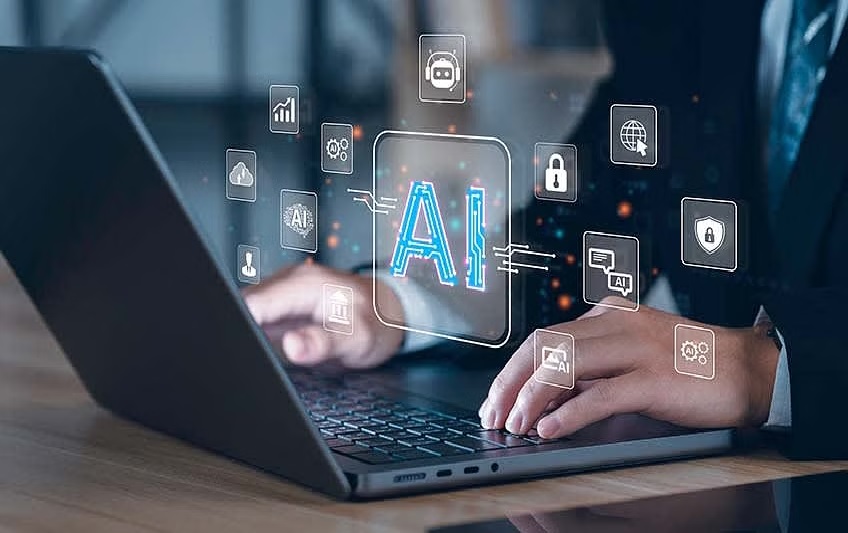Generative AI is often perceived as a grand disruptor that will revolutionize business processes. It is already being built into many workplace applications.
Large language models, for instance, can be used to observe IT events and inform IT operations with detailed, contextual insights on how the event may impact various business segments. This speeds up resolution times and reduces business disruption.
Table of Contents
Streamlined Business Processes
Generative AI profoundly impacts streamlined business processes, often by eliminating time-consuming, repetitive, and manual tasks. Streamlined business processes result in higher productivity within the organization.
For example, generative AI could replace some knowledge work activities that human employees traditionally perform. This is especially true for occupations such as postsecondary English language and literature teachers whose detailed work activities include writing, grading student assignments, and preparing test materials. With generative AI’s natural-language capabilities, however, these tasks could be automated and free up teachers’ time to focus on other essential job functions.
Other examples of generative AI in business include optimizing manufacturing processes, improving quality control, reducing waste, and accelerating new product development. In manufacturing, generative AI can create 3D models and visualizations of new products or designs, and it can even help to automate customer service and reduce the time it takes to respond to customers’ inquiries.
Organizations must carefully plan and manage its implementation to leverage the benefits of generative AI. This involves establishing data governance practices, managing ethical considerations, and navigating organizational change. A digital transformation and business innovation MSc program can equip leaders with the skills to integrate generative AI into their businesses effectively.
Better Customer Experience
Whether it’s vanquishing writer’s block, speeding up drug development, or drafting computer code, generative AI can revolutionize how companies work. It automates repetitive tasks and frees up time for employees to work on more strategic projects.
This boost in productivity can make the difference between winning and losing business. It allows workers to focus on customer service, a top priority for many organizations. For example, adding generative AI to customer support led to 35% productivity gains among the lowest-performing agents.
Generative AI can be a powerful tool for increasing productivity and improving the customer experience, but it must be used carefully. Companies that use generative AI should be transparent about how their data is being used and set up guardrails to prevent biased outcomes.
While generative AI can potentially transform business as we know it, it’s still early days for the technology. Companies must explore the solution space with an open mind and develop their generative AI strategy with this in mind. To ensure the best possible results, it’s also crucial that companies map out their goals and create a roadmap for implementation.
Increased Productivity
Generative AI can boost productivity by reducing the time and money required for content creation. It can also breed innovation, paving the way for new business models and applications. However, it is essential to remember that productivity gains can also displace jobs and lead to copyright and data security issues.
As generative AI becomes increasingly integrated into software packages and technology platforms, the potential for technical automation will increase significantly. Generative AI could potentially automate work activities that currently occupy 60 to 70 percent of employees’ time.
Research has shown that the most potent generative AI tools can dramatically reduce the time it takes for human workers to perform specific tasks. For example, studies have shown that software engineers can code twice as fast using generative AI systems and that writers can write up to 20% more quickly using language models. However, it is critical to remember that these results are based on limited studies that only measured participants’ performance during their first use of the tool and that there will be a learning curve for users.
Better Market Intelligence
Generative AI helps businesses anticipate and act on changes in their markets, products, and customer needs before competitors do. It can do this by using large language models to analyze data and identify trends in customer and market segments. Then, it can help businesses create more personalized and targeted marketing messages. For instance, the C3 AI generative is designed to be LLM agnostic, which is essential as LLMs evolve and new models are introduced—something happening rapidly.
It also helps businesses innovate new products by generating new designs and prototypes. And it can be used to automate and streamline processes such as supply chain management. It can also predict when equipment will likely break down and automatically schedule maintenance, reducing downtime and extending equipment life.
Like previous generations of automation technology, generative AI has the potential to increase productivity by accelerating business process automation and freeing up workers for more value-adding work activities. However, generative AI’s natural-language capabilities have the potential to shift more work activities associated with occupations with higher wages and educational requirements rather than lower-wage jobs. This could lead to job displacement for some individuals, although it could be offset by businesses investing in training or re-skilling programs to help them transition to new types of work.
Higher Productivity
With greater productivity, companies can offer more attractive wages to attract and retain employees. Similarly, higher profits can make it easier for companies to secure funding by issuing equity or borrowing.
Generative AI can improve internal knowledge management systems by reducing the time needed to retrieve information from databases or documents. Its impressive command of natural language processing enables it to respond to queries as humans would—making it easy for employees to find what they need.
Another benefit of generative AI is that it can help improve quality control in manufacturing. Analyzing data can identify areas that need improvement and speed up resolving defects.
Generative AI enables businesses to reduce costs and increase profitability in many ways. However, managers must have a robust and structured approach to data governance and security and develop effective training programs to ensure employees can work alongside generative AI effectively. This will help avoid unintended consequences of generative AI, such as biases that can lead to misleading or false information.





